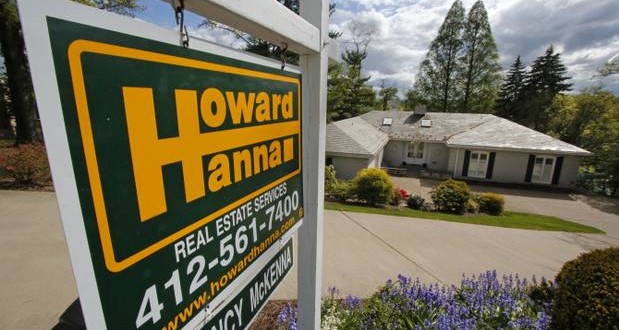Rising home values during the first three months of 2013 helped thousands of Inland Southern California get caught up — at least somewhat — in the pursuit of equity on their homes, a report released this week found.
The number of homeowners in Riverside and San Bernardino counties with mortgage balances higher than the home’s value declined by more than 36,500 in the first three months of 2013, according to a report released Wednesday, June 12, by CoreLogic, an Irvine-based residential property research firm. The percentage of upside-down residences dropped from 35.7 percent in the fourth quarter of 2012 to 31.4 percent.
That change means the Inland area is no longer one of the nation’s centerpieces of negative equity. At the end of last year, the area had the fifth-highest percentage of mortgages that were greater than the home’s market value, but the Inland Empire is no longer on the top-five list.
It does not, however, mean property owners have a significant amount of extra financial wiggle-room. More than 30,000 are barely in the black on their mortgages, meaning they’re not in a position to refinance or otherwise use the equity.
For most homeowners, this will be feel-good news that will mostly offer psychological benefits and some peace of mind, said Linda Itzen, a longtime Riverside-based financial planner with Ameriprise Financial.
“I’m finding more people who are breathing a sigh of relief that maybe they’re breaking even,” Itzen said. “But I don’t see a rush or any big desire to sell and buy up.”
Itzen added that the trend could entice some homeowners who have been renting their properties to sell if they are tired of the expense and responsibilities that come with being a landlord.
CoreLogic reported 294,132 Inland properties with upside-down mortgages in the fourth quarter of 2012. That number was down to 257,595 in the first quarter.
Residential property values have risen steadily for more than a year. Earlier this week, real estate information network DataQuick reported that the median sales price in San Bernardino County in May was up 28 percent from a year ago and up almost 23 percent in Riverside County. That adds up to an estimated $46,000 in equity growth for Inland homeowners in the past 12 months.
Economist John Husing pointed out that during the worst months of the recession in late 2009, almost 55 percent of all Inland homeowners with mortgages were under water, and that number was still close to 50 percent as recently as 2011. The declining numbers mean it’s less likely homeowners will abandon homes and turn Inland communities into eyesores.
Husing said he was concerned that many Inland homes on the sales market are being snapped up by outside investors who do not have a stake in the community. He said the rising home valuations could convince families that the time to get into the market has arrived.
Also, interest rates for mortgages have increased for three straight weeks and are now just below 4 percent for a 30-year loan.
“I think buyers are beginning to understand that prices are moving,” Husing said. “They could be thinking, ‘Oh my god, I’d better get in there.’ ”
Nationally some 9.7 million mortgages, slightly less than 20 percent, had higher balances than the home’s value in the first quarter. The cities with the highest percentages of underwater houses were Tampa-St. Petersburg, Miami, Atlanta, Chicago and Warren, Mich., CoreLogic reported.
Rising home values during the first three months of 2013 helped thousands of Inland Southern California get caught up — at least somewhat — in the pursuit of equity on their homes, a report released this week found.
The number of homeowners in Riverside and San Bernardino counties with mortgage balances higher than the home’s value declined by more than 36,500 in the first three months of 2013, according to a report released Wednesday, June 12, by CoreLogic, an Irvine-based residential property research firm. The percentage of upside-down residences dropped from 35.7 percent in the fourth quarter of 2012 to 31.4 percent.
That change means the Inland area is no longer one of the nation’s centerpieces of negative equity. At the end of last year, the area had the fifth-highest percentage of mortgages that were greater than the home’s market value, but the Inland Empire is no longer on the top-five list.
It does not, however, mean property owners have a significant amount of extra financial wiggle-room. More than 30,000 are barely in the black on their mortgages, meaning they’re not in a position to refinance or otherwise use the equity.
For most homeowners, this will be feel-good news that will mostly offer psychological benefits and some peace of mind, said Linda Itzen, a longtime Riverside-based financial planner with Ameriprise Financial.
“I’m finding more people who are breathing a sigh of relief that maybe they’re breaking even,” Itzen said. “But I don’t see a rush or any big desire to sell and buy up.”
Itzen added that the trend could entice some homeowners who have been renting their properties to sell if they are tired of the expense and responsibilities that come with being a landlord.
CoreLogic reported 294,132 Inland properties with upside-down mortgages in the fourth quarter of 2012. That number was down to 257,595 in the first quarter.
Residential property values have risen steadily for more than a year. Earlier this week, real estate information network DataQuick reported that the median sales price in San Bernardino County in May was up 28 percent from a year ago and up almost 23 percent in Riverside County. That adds up to an estimated $46,000 in equity growth for Inland homeowners in the past 12 months.
Economist John Husing pointed out that during the worst months of the recession in late 2009, almost 55 percent of all Inland homeowners with mortgages were under water, and that number was still close to 50 percent as recently as 2011. The declining numbers mean it’s less likely homeowners will abandon homes and turn Inland communities into eyesores.
Husing said he was concerned that many Inland homes on the sales market are being snapped up by outside investors who do not have a stake in the community. He said the rising home valuations could convince families that the time to get into the market has arrived.
Also, interest rates for mortgages have increased for three straight weeks and are now just below 4 percent for a 30-year loan.
“I think buyers are beginning to understand that prices are moving,” Husing said. “They could be thinking, ‘Oh my god, I’d better get in there.’ ”
Nationally some 9.7 million mortgages, slightly less than 20 percent, had higher balances than the home’s value in the first quarter. The cities with the highest percentages of underwater houses were Tampa-St. Petersburg, Miami, Atlanta, Chicago and Warren, Mich., CoreLogic reported.
Rising home values during the first three months of 2013 helped thousands of Inland Southern California get caught up — at least somewhat — in the pursuit of equity on their homes, a report released this week found.
The number of homeowners in Riverside and San Bernardino counties with mortgage balances higher than the home’s value declined by more than 36,500 in the first three months of 2013, according to a report released Wednesday, June 12, by CoreLogic, an Irvine-based residential property research firm. The percentage of upside-down residences dropped from 35.7 percent in the fourth quarter of 2012 to 31.4 percent.
That change means the Inland area is no longer one of the nation’s centerpieces of negative equity. At the end of last year, the area had the fifth-highest percentage of mortgages that were greater than the home’s market value, but the Inland Empire is no longer on the top-five list.
It does not, however, mean property owners have a significant amount of extra financial wiggle-room. More than 30,000 are barely in the black on their mortgages, meaning they’re not in a position to refinance or otherwise use the equity.
For most homeowners, this will be feel-good news that will mostly offer psychological benefits and some peace of mind, said Linda Itzen, a longtime Riverside-based financial planner with Ameriprise Financial.
“I’m finding more people who are breathing a sigh of relief that maybe they’re breaking even,” Itzen said. “But I don’t see a rush or any big desire to sell and buy up.”
Itzen added that the trend could entice some homeowners who have been renting their properties to sell if they are tired of the expense and responsibilities that come with being a landlord.
CoreLogic reported 294,132 Inland properties with upside-down mortgages in the fourth quarter of 2012. That number was down to 257,595 in the first quarter.
Residential property values have risen steadily for more than a year. Earlier this week, real estate information network DataQuick reported that the median sales price in San Bernardino County in May was up 28 percent from a year ago and up almost 23 percent in Riverside County. That adds up to an estimated $46,000 in equity growth for Inland homeowners in the past 12 months.
Economist John Husing pointed out that during the worst months of the recession in late 2009, almost 55 percent of all Inland homeowners with mortgages were under water, and that number was still close to 50 percent as recently as 2011. The declining numbers mean it’s less likely homeowners will abandon homes and turn Inland communities into eyesores.
Husing said he was concerned that many Inland homes on the sales market are being snapped up by outside investors who do not have a stake in the community. He said the rising home valuations could convince families that the time to get into the market has arrived.
Also, interest rates for mortgages have increased for three straight weeks and are now just below 4 percent for a 30-year loan.
“I think buyers are beginning to understand that prices are moving,” Husing said. “They could be thinking, ‘Oh my god, I’d better get in there.’ ”
Nationally some 9.7 million mortgages, slightly less than 20 percent, had higher balances than the home’s value in the first quarter. The cities with the highest percentages of underwater houses were Tampa-St. Petersburg, Miami, Atlanta, Chicago and Warren, Mich., CoreLogic reported.
 Westside Story Newspaper – Online The News of The Empire – Sharing the Quest for Excellence
Westside Story Newspaper – Online The News of The Empire – Sharing the Quest for Excellence





